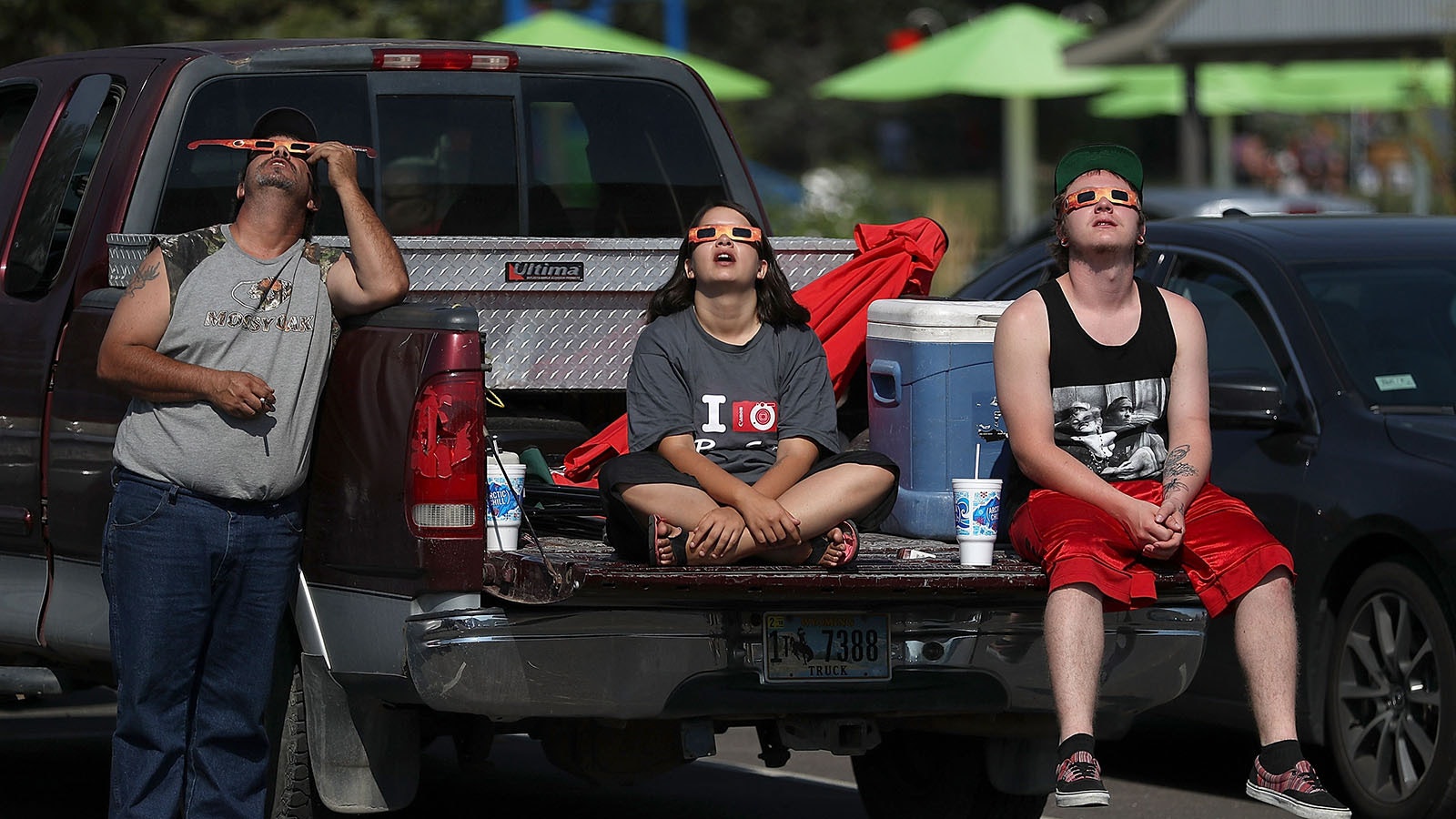The total solar eclipse that is coming up April 8 will chart a narrow, 115-mile-wide path across America that begins in Texas and exits the country in Maine.
That means Wyoming is nowhere near the swath of totality this time around, as the “Map of Nope” meme created by GreatAmericanEclipse.com that’s been circulating widely on social media clearly shows.
That also means there won’t be any crazy rush of people clogging up the Cowboy State’s highways and byways, like what happened in 2017. That doesn’t mean, however, that there’s nothing at all to see in Wyoming for those who are too busy to make a trip to Texas or one of the other states in the path of the totality.
“The partial eclipse will certainly be taking place in Wyoming,” Wyoming Stargazing’s Sam Singer told Cowboy State Daily. “Depending on where folks live, I think it’s between like 40-65%, with 65% being on the eastern side of the state and 40% being in the northwest part of the state.”
Partial eclipses are still pretty cool to see, and they have the advantage that they’re generally visible, weather permitting, from anyone’s backyard, with minimal special effort or expense.
In Wyoming, the partial solar eclipse will begin at 11:26 a.m. April 8, and won’t completely disappear until 1:57 p.m., according to a quick Google search of online solar charts.
This time around, the eclipse is going to last a bit longer than it did in 2017, Singer said. The reason for that just has to do with the geometry of all the celestial bodies and where they’re hanging out in space.
“That has to do with the very specific angles that you find the moon, the sun and the Earth,” he said. “And it just so happens that this time the moon is a little bit closer to Earth than it was during the last eclipse. So that shadow is a little bit bigger, and that’s why we’ll have a bit longer totality.”

How To Safely Watch The Eclipse
The most important part of preparing to view a partial eclipse is to ensure you have the right kind of glasses.
It’s possible to instantly cause serious eye injury by looking at the sun through a camera lens, binoculars or telescope without a solar filter.
“Even when it’s 95% eclipsed, the sun can still hurt your eyes,” Singer said. “You’ve got to have either a pair of eclipse glasses or welder’s glass.”
The other option if neither eclipse glasses or welder’s helmet are available, Singer said, is to make a pinhole projector.
That’s as simple as punching a tiny hole in a piece of paper with a needle, then using the resulting pinhole to project the sun’s image onto the asphalt or pavement below.
Don’t look through the pinhole itself at the sun, though. The pinhole can’t protect your eyes. Instead, put your back to the sun, then hold the paper a foot or so from the ground. That will project the shadow of what’s happening in the sky on the ground.
See It Now
Wyoming’s next partial eclipse won’t happen until January 2029, according to TimeandDate, a website that tracks eclipses based on where one lives.
A third option, made possible by today’s digital technology, is to find a livestream online.
Singer plans to create a livestream for Wyoming Stargazing’s website the day of the eclipse.
“A bunch of us are headed down to Texas, and we’re going to livestream the eclipse for everybody,” he said. “We think we’ll probably find the best place about an hour or so outside of San Antonio, and we’ll set up there with some telescopes and cameras.”
The totality will be taking place at about 12:32 p.m. Wyoming time, according to Singer.
“The difference between a partial and total eclipse is night and day,” he said. “Quite literally.”

Traveling To See The Eclipse
For those who can take the time off to travel and see the eclipse, GreatAmericanEclipse.com has detailed maps and stats that can help plan a perfect trip.
Many are going to Texas because the state is known for dry, sunny weather, and the totality will last just over 4 minutes, according to NASA charts.
Maybe Texas isn’t your cup of tea. It’s not the only state to see the eclipse from, and it might not even necessarily be the most fetching.
Take Niagara Falls, New York, for example. That’s going to last a nice 3 minutes and 48 seconds, and includes the possibility of an iridescent diamond ring.
From the outlook called Terrapin Point, the sun will hang halfway up in the southwest, just over the Falls. After the eclipse, there’s the Nikola Tesla statue in Queen Victoria Park to visit.
There’s also Hot Springs National Park in Arkansas, which is in the path of the totality, as is Ste. Genevieve National Historic Park in Missouri.
Both of the national parks in the path of the totality have planned special activities around the total eclipse.
Some states, meanwhile, have planned festivals around the eclipse. Richmond, Indiana, for example, is having an Eclipse & More Event featuring camping, zip lining, rock walls and food trucks at Wayne County Fairgrounds; while Russellville, Arkansas, plans a blues fest with hot air balloons called Total Eclipse of the Heart.
Renée Jean can be reached at renee@cowboystatedaily.com.





